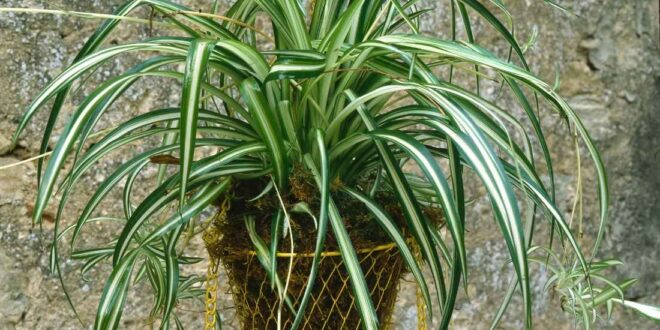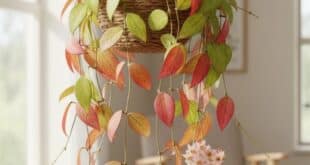Let’s Meet Spider Plant
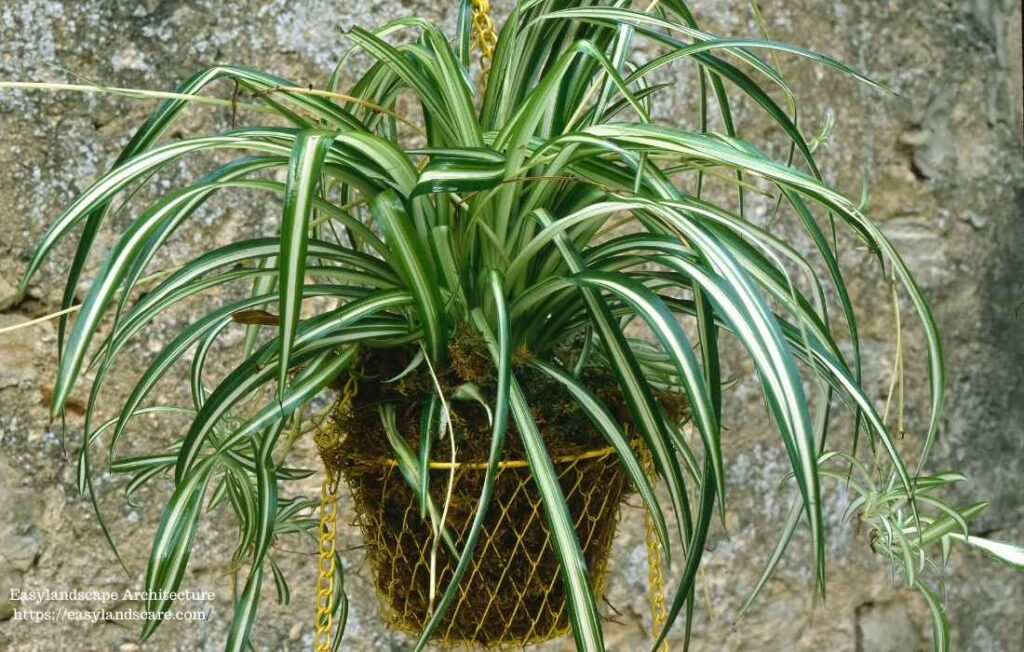
The spider plant (Chlorophytum comosum) is one of the most popular indoor plants worldwide, thanks to its elegant foliage and easy care. With its long, arching leaves and the charming baby plants (spiderettes) it produces, this plant adds vibrancy to any environment while also being known for its air-purifying qualities. Let’s take a closer look at the characteristics, varieties, and care secrets of this unique plant.
Defining the Spider Plant: Leaves, Plantlets, and Overall Appearance
The most distinctive feature of the spider plant is its rosette of long, slender leaves. These leaves are typically green but can have white or yellow stripes depending on the variety. As the plant matures, it sends out long stems that produce miniature plantlets, often referred to as “spiderettes” or “pups.” These baby plants can root while still attached to the mother plant or be easily separated to grow independently. This unique characteristic is how it earned the name “spider plant.”
Origins of the Spider Plant: Native Habitat and Discovery
The spider plant originates from the tropical and southern regions of Africa. First discovered in the 18th century, it quickly became a popular houseplant in Europe and other parts of the world. In its natural habitat, it thrives in the humid and shaded areas of forests.
Different Names for the Spider Plant and the Reasons Behind Them
While “spider plant” is its most common name, it’s also known by other names that reflect its appearance. Due to the dangling spiderettes, it’s sometimes called “airplane plant” or “hen and chickens.” In some regions, its ribbon-like leaves have earned it the name “ribbon plant.”
What are the Different Types of Spider Plants?
Most Popular Spider Plant Varieties: ‘Vittatum’, ‘Variegatum’, and More
- Vittatum: Features green leaves with a prominent white stripe down the center. It’s one of the most common and classic spider plant types.
- Variegatum: Has green leaves with creamy white or yellow stripes along the edges. It offers a brighter appearance compared to ‘Vittatum.’
- Bonnie: A more compact variety with charming, curled leaves. It tends to be smaller in size and has a delightful, curly appearance.
The Plain Green Spider Plant: Chlorophytum comosum
This variety has solid green leaves without any stripes. It’s known for its resilience and ease of care.
Curly Spider Plants: ‘Bonnie’ and Others
‘Bonnie’ is the most well-known curly spider plant, but other hybrids with similar curled foliage may also be available. These types have a fuller, more rounded look compared to straight-leaf varieties.
How to Care for a Spider Plant?
Ideal Light Levels: Bright, Indirect Light is Best
Spider plants thrive in bright, indirect light. Direct sunlight can scorch their leaves. An east or west-facing window is often ideal. Insufficient light can lead to leggy growth and reduced spiderette production.
Watering Needs: When and How to Water
Careful watering is crucial. Allow the top inch of the soil to dry out before watering thoroughly with lukewarm water. Overwatering can lead to root rot. During the winter months, when the plant’s growth slows down, you can reduce the watering frequency.
Soil and Pot Selection: Why Good Drainage Matters
Spider plants prefer well-draining soil. A mixture of peat moss, perlite, and vermiculite works well. The pot you choose is also important. Select a pot with drainage holes to allow excess water to escape easily. As the plant’s roots fill the pot, usually in the spring, you can repot it into a slightly larger container.
How to Propagate a Spider Plant? Easy Methods
Propagating by Rooting Spiderettes
The most common and easiest method is to root the baby spider plants (spiderettes). You can either detach them from the mother plant and plant them directly in moist soil, or you can place the spiderettes in a glass of water until roots develop before transferring them to soil. For better success when planting directly in soil, ensure the spiderette has small aerial roots already forming. Simply place the base of the spiderette on the soil surface and keep it consistently moist. Once established, you can sever the connection to the mother plant.
Propagating by Leaf Cuttings (Less Common)
While less common and with a lower success rate, spider plants can also be propagated from leaf cuttings. Select a healthy leaf and cut it into sections, ensuring each section has a base. Allow the cuttings to callous over for a few hours, then insert the base of each cutting into moist potting mix. Keep the soil consistently moist and provide indirect light. Rooting can take several weeks, and not all cuttings will produce new plants.
Propagating by Division: Separating Mature Plants
When repotting a mature, overgrown spider plant, you can divide it into multiple smaller plants. Gently separate the root ball, ensuring each division has a good portion of roots and foliage. Plant each division in its own pot with fresh potting mix. This is a great way to rejuvenate an older plant and create new ones.
The Most Suitable Light and Temperature Conditions for a Spider Plant
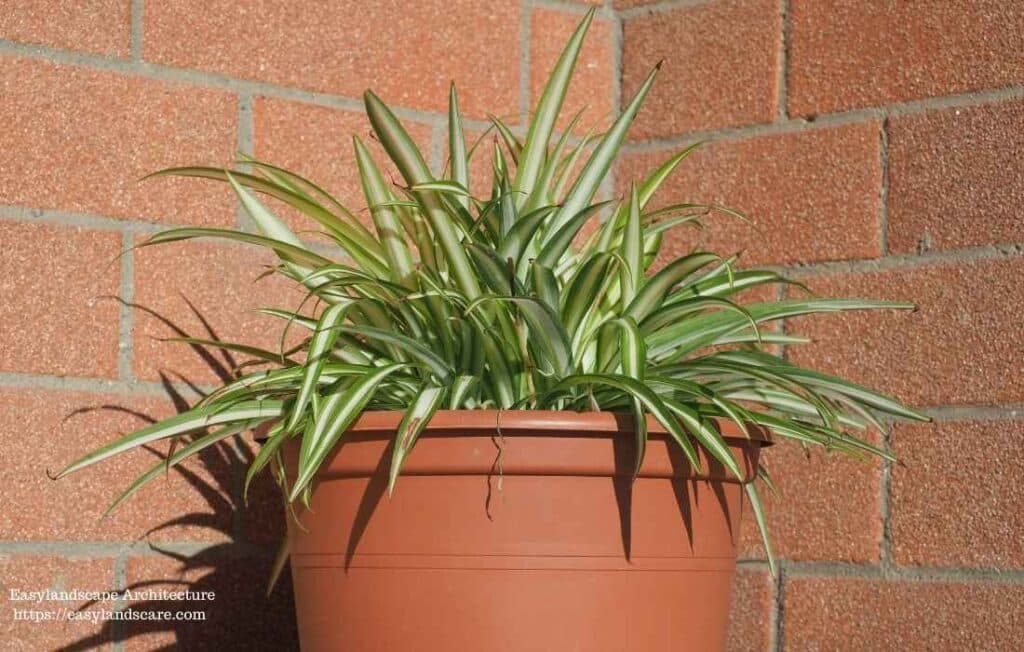
Ideal Temperature Range: Avoid Extreme Heat or Cold
Spider plants prefer average room temperatures between 65-75°F (18-24°C). Avoid placing them near drafts or extreme temperatures, as this can stress the plant.
Light Tips: Growing Spider Plants in Different Environments
While adaptable to different light conditions, spider plants flourish in bright, indirect light. In dimly lit areas, their growth may be slower, and their variegation might be less pronounced. If you notice the green portions of variegated leaves fading, it might indicate insufficient light. Conversely, brown tips on the leaves can be a sign of too much direct sunlight.
What Kind of Soil Does a Spider Plant Prefer? Pot Selection and Tips
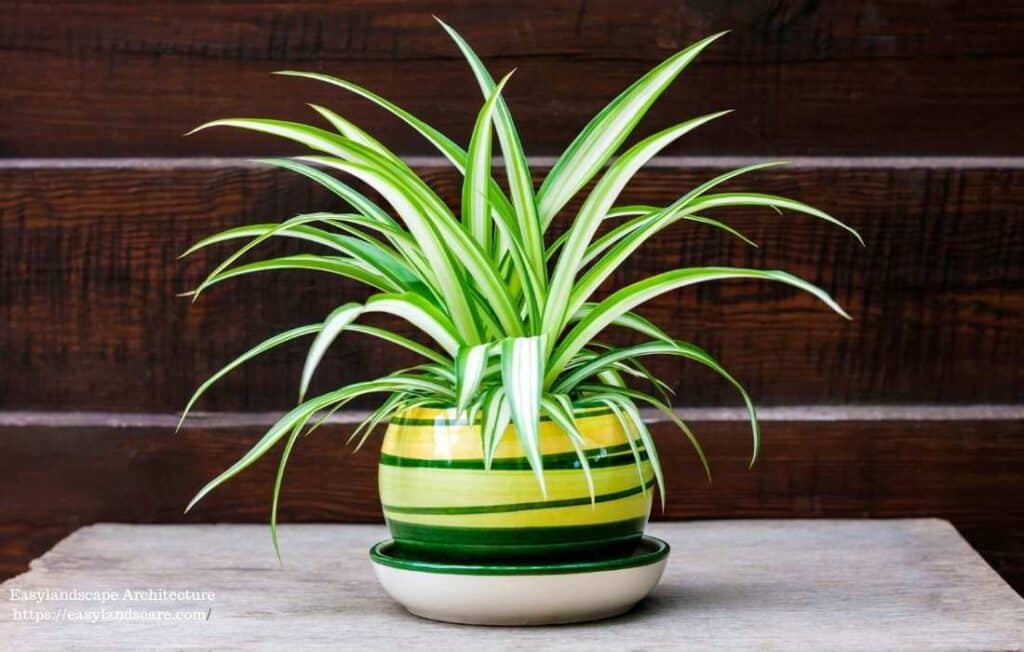
The Best Soil Mix: Options that Provide Good Drainage
As mentioned earlier, well-draining soil is crucial to prevent root rot. A general-purpose potting mix amended with perlite or sand to improve drainage is ideal. You can also use a potting mix specifically formulated for houseplants.
How to Choose the Right Pot Size and Material
Select a pot that is appropriately sized for the plant’s root system. Too large a pot can hold excess moisture, increasing the risk of root rot. Ensure the pot has drainage holes. While pot material (terracotta, plastic, ceramic) is less critical than drainage, terracotta pots can help the soil dry out faster due to their porous nature.
Spider Plant Watering Guide: How Often Should You Water?
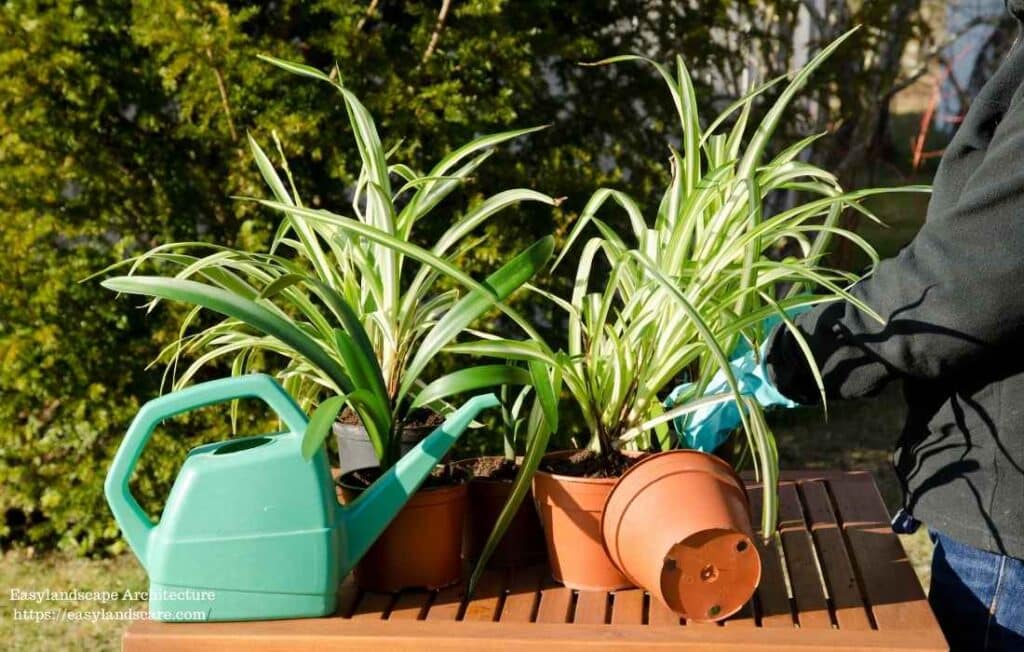
Seasonal Watering Adjustments: Summer vs. Winter
During the active growing season (spring and summer), spider plants will need more frequent watering. Check the soil moisture regularly and water when the top inch feels dry. In the dormant winter months, reduce watering as the plant’s water needs decrease.
Signs of Overwatering and Underwatering
Yellowing leaves, especially if they are soft and mushy, can be a sign of overwatering. Brown, crispy leaf tips often indicate underwatering or low humidity. Drooping leaves can be a sign of either extreme, so it’s important to check the soil moisture to determine the cause.
How to Fertilize a Spider Plant?
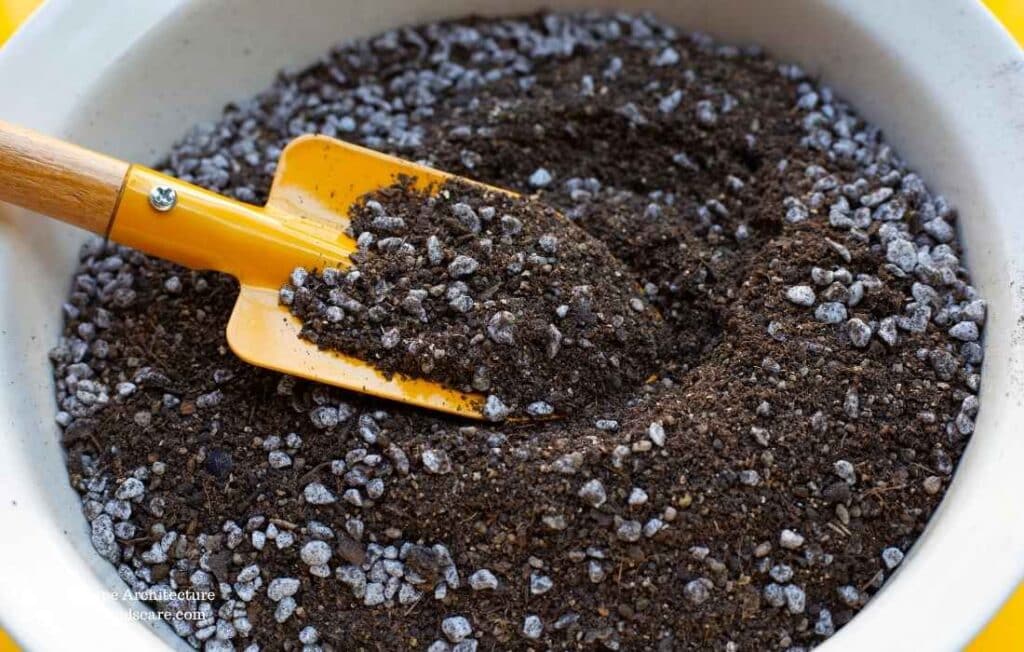
When and How Often to Fertilize
During the active growing season (spring and summer), fertilize your spider plant every 2-4 weeks with a balanced liquid houseplant fertilizer diluted to half strength. Avoid fertilizing during the fall and winter when the plant’s growth slows down.
The Best Types of Fertilizer to Use
A balanced liquid fertilizer (e.g., 10-10-10 or 20-20-20) is suitable for spider plants. Always dilute the fertilizer according to the package instructions to avoid burning the roots.
The Dangers of Over-Fertilizing
Over-fertilizing can lead to brown leaf tips and edges, as well as a buildup of salts in the soil that can harm the plant’s roots. It’s always better to under-fertilize than over-fertilize.
Why are Spider Plant Leaves Turning Yellow? Causes and Solutions
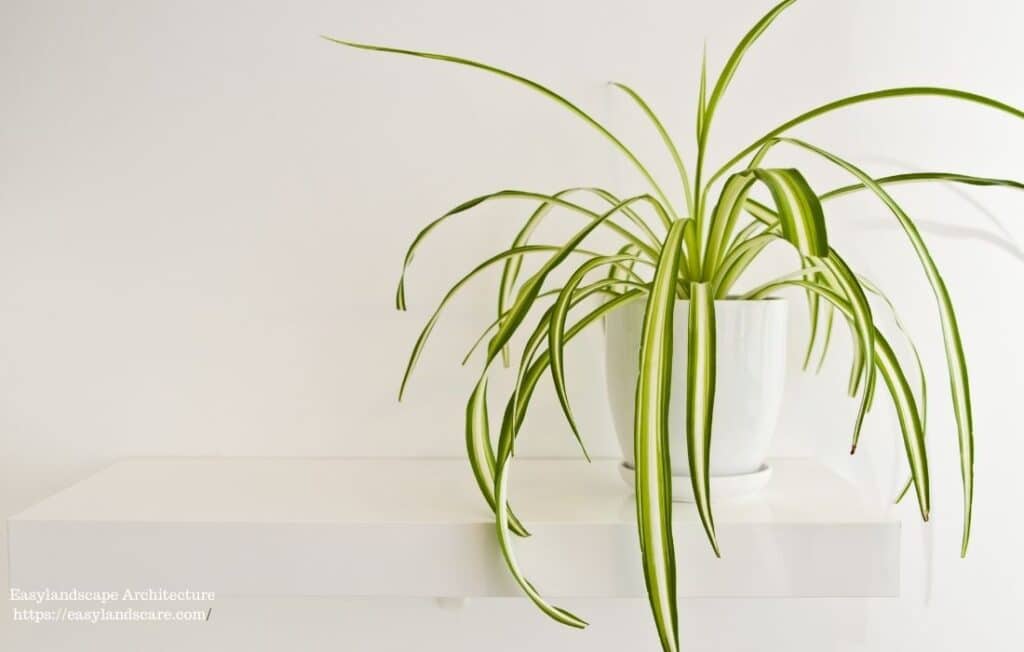
Common Causes of Yellowing: Overwatering, Insufficient Light, and More
- Overwatering: This is one of the most frequent causes of yellowing leaves. Soggy soil prevents the roots from getting oxygen.
- Insufficient Light: While spider plants tolerate low light, prolonged lack of bright, indirect light can cause the leaves to lose their vibrancy and turn yellow.
- Nutrient Deficiencies: Lack of essential nutrients in the soil can also lead to yellowing. Regular, diluted fertilization during the growing season can help prevent this.
- Tap Water Issues: Some tap water contains high levels of salts, chlorine, or fluoride, which can cause leaf tips to brown and eventually lead to yellowing. Using filtered or distilled water can help.
- Old Age: As leaves naturally age, they will eventually turn yellow and die off. This is a normal part of the plant’s life cycle.
How to Prevent and Treat Yellowing
- Adjust Watering: Ensure you are allowing the top inch of soil to dry out between waterings.
- Provide Adequate Light: Move your plant to a location with bright, indirect light.
- Fertilize Properly: Follow the guidelines for fertilizing during the growing season.
- Use Quality Water: If you suspect tap water issues, switch to filtered or distilled water.
- Remove Yellow Leaves: Prune away yellow or dead leaves to encourage new growth and improve the plant’s appearance.
Is the Spider Plant Toxic? Is it Safe for Pets?
Toxicity Levels for Pets and Children
Fortunately, spider plants are generally considered non-toxic to cats and dogs, according to the ASPCA (American Society for the Prevention of Cruelty to Animals). This makes them a relatively safe choice for households with furry friends.
Tips for Preventing Pets from Eating Plants
While non-toxic, it’s still best to discourage pets from chewing on houseplants, as it can cause mild stomach upset. Placing plants on high shelves or in hanging baskets can help keep them out of reach of curious pets.
Home Decorating with Spider Plants: Inspiring Ideas
Creating Style with Different Pots and Hangers
The appearance of your spider plant can be dramatically changed by the pot or hanger you choose. Modern ceramic pots, rustic terracotta, or stylish macrame hangers can all complement the plant’s aesthetic and your personal style.
Using Spider Plants in Different Rooms
Spider plants adapt well to different rooms as long as their basic light and humidity needs are met. They look great in living rooms, bedrooms, offices, and even bathrooms with sufficient indirect light. Their trailing foliage makes them ideal for shelves and hanging displays.
Benefits of Spider Plants for Your Home: Why They Are Ideal
- Air-Purifying Qualities: Filtering Out Toxins
- Being a Low-Maintenance Houseplant: Their adaptability and relatively forgiving nature make spider plants an excellent choice for both experienced plant enthusiasts and beginners. They can tolerate some neglect, making them ideal for busy individuals.
Spider Plant Diseases and Pest Control
Common Diseases and Their Symptoms
Overwatering can lead to fungal diseases, which may manifest as dark spots on the leaves or root rot. Providing proper drainage and avoiding overwatering is the best way to prevent these issues.
Most Common Pests and How to Get Rid of Them
Common houseplant pests like spider mites, aphids, and mealybugs can sometimes infest spider plants. Regularly inspect your plant for signs of infestation, such as webbing, sticky residue, or small insects on the leaves and stems. If you find pests, you can try wiping them off with a damp cloth, spraying the plant with insecticidal soap, or using neem oil.
How to Care for Spider Plants in Winter
Reduced Watering and Fertilizing Needs
During the winter months, spider plants enter a period of slower growth. Reduce watering frequency and withhold fertilizer until the spring when active growth resumes.
Proper Placement and Temperature Control
Avoid placing your spider plant near cold drafts from windows or doors during the winter. Maintain a stable room temperature and ensure it still receives adequate indirect light.
How Big Do Spider Plants Get? Size and Growth Process
Typical Size and Growth Rate
Indoors, spider plants typically reach a spread of 1-2 feet (30-60 cm) and a height of about the same. They are relatively fast-growing, especially during the spring and summer months, and will readily produce spiderettes as they mature.
Factors Affecting Growth
Light, water, nutrients, and pot size all play a role in the growth and size of your spider plant. Providing optimal conditions will encourage healthy growth and abundant spiderette production.
Spider Plants and Feng Shui: Enhance Your Home’s Energy
In Feng Shui, spider plants are considered to bring good luck and positive energy into the home. Their vibrant green color symbolizes growth and vitality, and their air-purifying qualities are believed to promote a healthy and harmonious environment. Placing spider plants in areas with stagnant energy or near electronics is thought to help balance the flow of chi.
Why are Spider Plants Popular? The Features That Make Them Unique
Being Affordable and Easy to Find
Spider plants are widely available in nurseries, garden centers, and even some grocery stores, and they are generally quite affordable.
Ease of Care and Adaptability
Their low-maintenance nature and ability to tolerate a range of indoor conditions make them a favorite among plant lovers of all skill levels.
Attractive Appearance and Air-Purifying Benefits
With their graceful foliage and the added benefit of air purification, spider plants are both aesthetically pleasing and beneficial for indoor environments. Their ability to produce numerous offspring also makes them a rewarding plant to grow and share.
To discover other indoor plants as beautiful as the spider plant, we recommend reading our article on the Best Indoor Plants: Top 15 Picks and Care Tips

